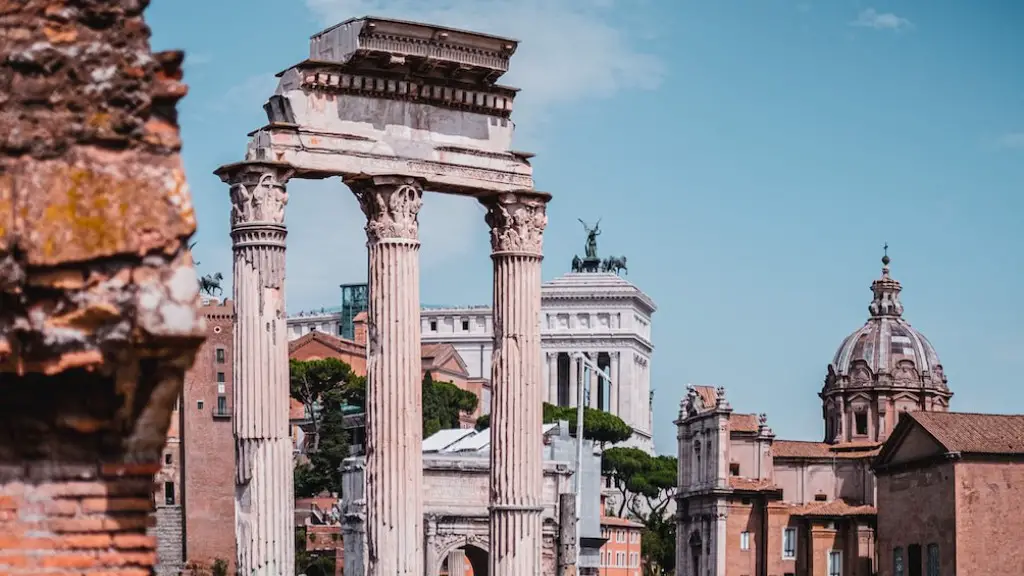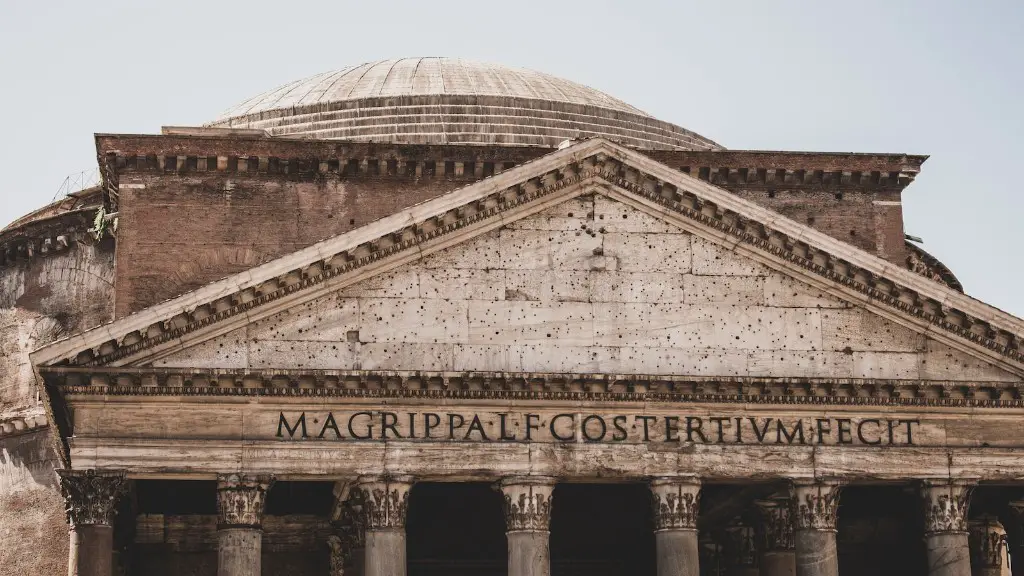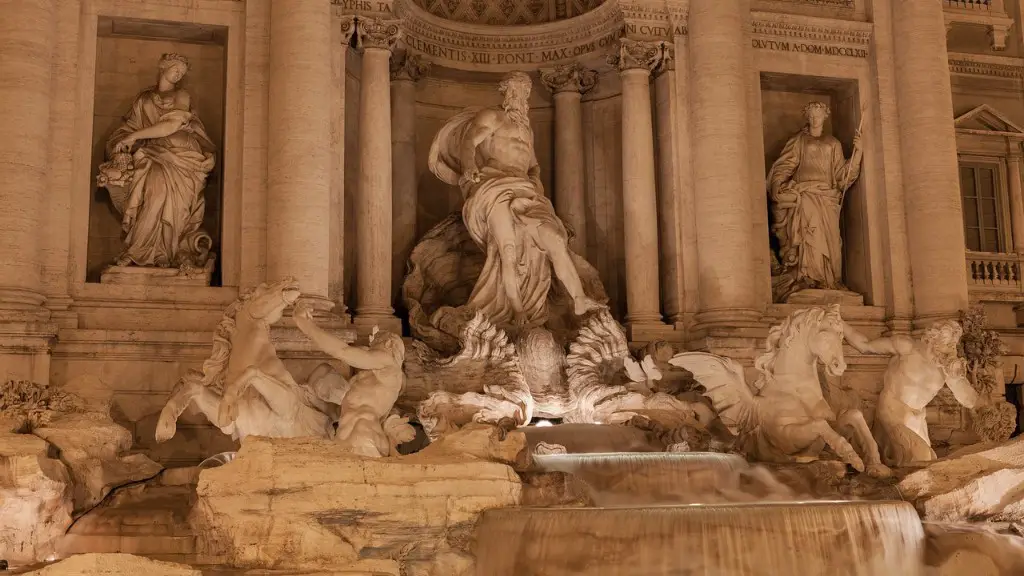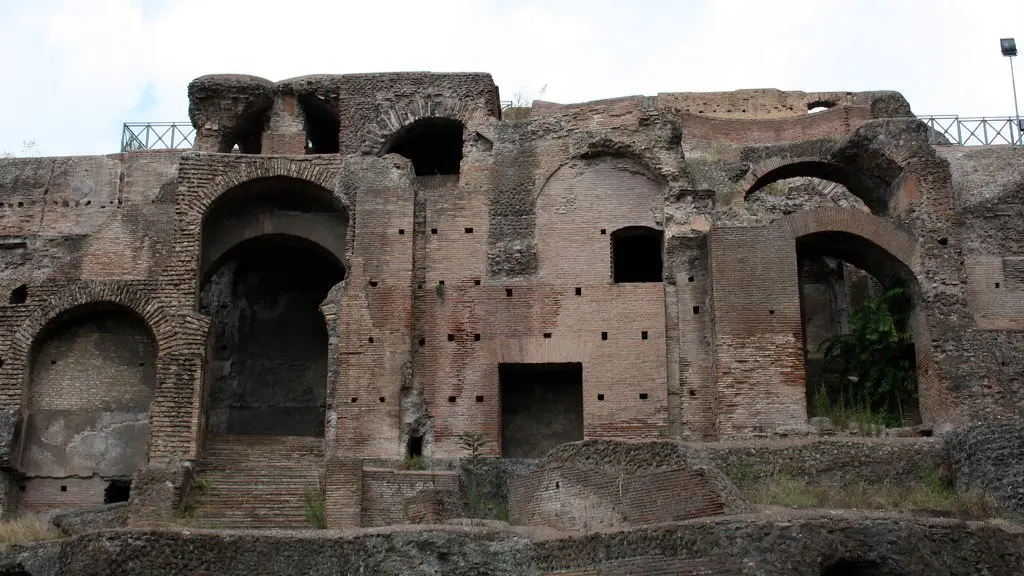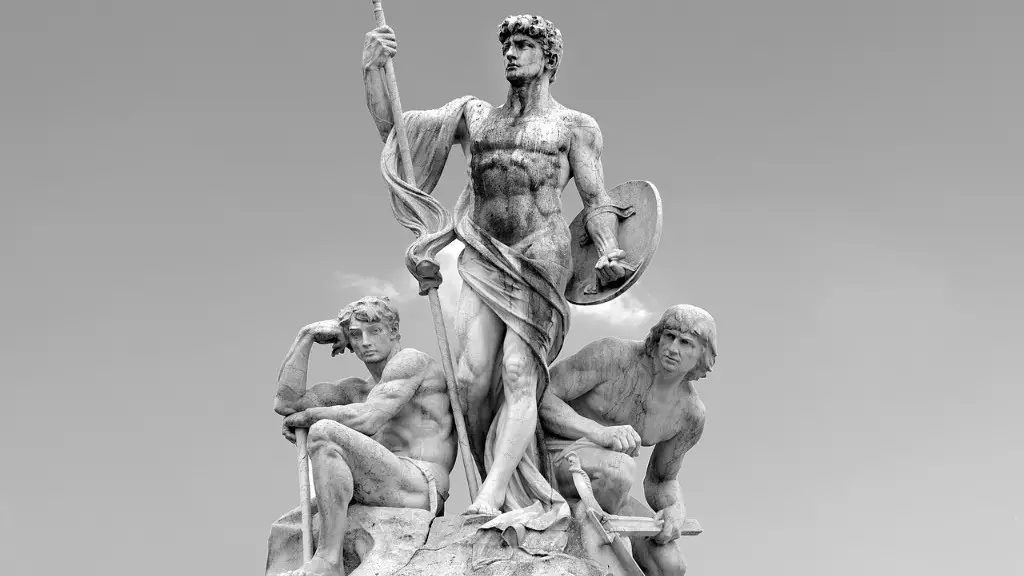Overview
Ancient Rome was a superpower known for its rich culture, immense power, and great military might. Yet, not much is known about the type of government it had in place to rule this vast empire. The Roman government was a complex and ever-evolving political system that lasted over a thousand years and spanned much of Europe, Asia Minor, and Africa. This article will examine the different stages of the Roman government and analyze the characteristics that make it unique.
History of Roman Government
The government of Ancient Rome can be divided into three main periods: the monarchy, the Republic, and the Empire. During the monarchy period, from 753 BC to 500 BC, Rome was ruled from a hereditary monarch. During this time, the city was organized into tribes and offices such as the Assembly, the Senate, and the Courts. Rome had a relatively small population and its government was limited in scope. The kings had very little power and most decisions were made by the various assemblies and the Senate.
The Republic period, from 500 BC to 27 BC, saw the development of a more sophisticated government structure. It is during this period that Rome became an empire and began to expand. The Republic was ruled by a senate, a group of elected leaders who acted as advisers to the elected consuls. The consuls held a great deal of power and were responsible for making laws, declaring war, and determining foreign policy. The power of the consuls was balanced by the Senate, which was made up of aristocrats who ensured their own interests were represented.
The Republic period ended with the rise of Julius Caesar and the establishment of the Empire. Caesar centralized power and abolished the Republic in favor of a new autocratic government. The Roman Empire lasted until the fall of Rome in 476 AD. During the Empire period, Rome had an emperor who held absolute power over the Empire. This period is known for its wealth and power, as well as its decline and eventual fall.
Features of Roman Government
The Roman government was unique in many ways. It was a constitutional monarchy, which means that the power was vested in the hands of the people, who had the right to elect their own leaders. This was in contrast with other powers of the ancient world such as Egypt and Persia, who had highly centralized regimes. The Senate was a uniquely Roman institution, and its members wielded considerable influence in the government and could override decisions made by the consuls.
The Roman government was also characterized by its devotion to law. Laws were codified and were enforced throughout the empire. This served to keep order and ensure that laws were applied evenly throughout the empire. This was in contrast to other ancient civilizations such as the Greeks, who had no codified laws. The law was also used to protect the rights of citizens, particularly those from the lower classes. Ancient Rome also had a complex bureaucracy and a sophisticated legal system.
Legacy of Roman Government
The legacy of the Roman government can be seen in many modern governments. Its devotion to law and order, protection of the rights of citizens, and development of a complex bureaucracy have all been carried over into the modern government systems. The Roman Republic and the Senate are often cited as a model of democracy and were the inspiration for the U.S. government. The Roman government also influenced the development of European governments, as many countries adopted its ideas and structure.
The Roman government left an indelible mark on history and its legacy can still be seen in the modern world. Its complexity, scope, and longevity make it a unique example of government and its influence can still be felt in many governments today.
Structure of Roman Government
The structure of the Roman government consisted of several interconnected components. At the apex of the government was the Roman Emperor, who had absolute power over the state. Beneath the Emperor was the Senate, an assembly of elected leaders who acted as advisers and could veto decisions made by the Emperor. The Senate was made up of aristocrats and wealthy patricians, and was responsible for passing laws and setting foreign policy.
Below the Senate was the Assembly, a group of citizens who elected the consuls and helped devise the laws of the state. The Assembly was made up of citizens from different social classes and its decisions could not be vetoed by the Senate. Lastly, the Courts of Law administered justice and heard both criminal and civil cases.
Role of Religion in Roman Government
Religion played an important role in the ancient Roman government. The state was deeply influenced by the gods and goddesses of the Roman pantheon and religious rituals were often part of official ceremonies. The pontifex maximus was the highest religious authority in Rome and was often appointed by the Emperor. Religion was also used to control and manipulate the citizens of Rome; for example, Emperor Nero was known for his persecution of Christians.
The religious beliefs and practices of the state also impacted the laws of Rome. Many of the laws were based on ancient Roman religious customs and beliefs. For example, adultery was commonly prohibited and adultery trials were common during the Republic period. This shows that religion had a powerful influence on the government of Rome.
Economic Influence of Roman Government
The Roman government had an extensive economic reach. It imposed taxes, levied fines, and directed the distribution of grain. This enabled the Roman state to acquire considerable wealth, which was then used to fund its military campaigns, build monuments and public works projects, and improve infrastructure. The economy of Rome was based on agriculture, with a large slave population working in the fields.
The Roman government also had an impact on regional trade. The Empire established colony cities and encouraged a form of mercantilism. The cities of Pompeii, Ostia, and Ephesus were the hub of Mediterranean trade and formed the origin of the Silk Road. Roman merchants traveled around the Mediterranean, trading goods from all parts of the Empire.
Reforms of Roman Government
Rome was always evolving and over the centuries, the government implemented several reforms. During the Republic period, most reforms were aimed at increasing the power of the Senate and limiting the power of the consuls. These reforms focused on the structure and function of the government, and included the creation of new offices such as the praetors and the aediles. During the Empire period, reforms were aimed at increasing the efficiency of the bureaucracy, expanding the senate, and making the legal system more accessible to the masses.
The reforms of the Roman government had far reaching consequences. They allowed Rome to become more organized and efficient, and enabled it to expand its territory and build an immense Empire. These reforms were also adopted by other governments in the region and were essential in the development of later civilizations.
Rome’s Stability and Decline
The Roman government was able to maintain its stability and power for centuries, thanks to its impressive bureaucracy, devotion to law and order, and complex infrastructure. However, this stability was not sustained and the rise of Christianity, the rise of the Barbarians, and the economic downturn caused by a plague all contributed to its eventual decline. The fall of Rome in 476 AD marked the end of an era and the government that created one of the most impressive empires of ancient times.
The legacy of the Roman government is still seen in the modern world. Its devotion to law and order, protection of rights, and complex bureaucracy were all emulated by later governments. From its humble beginnings as a monarchy, the Roman government grew and evolved into an empire that was admired for its stability and power, and is still studied by historians and political scientists today.
